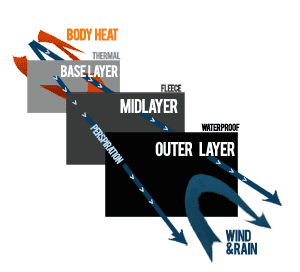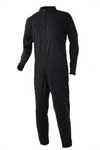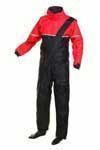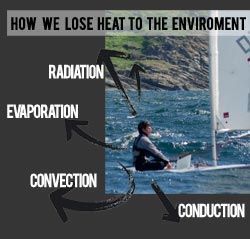
So when it comes to sailing we all know that staying warm is critical to a happy sail- and in theory, we know that a drysuit is strategic to the attainment of this ‘warm place’.
Right?
Yes!.. But if we take a closer look at understanding the science and processes involved with the heating and sustaining systems whilst on the water. You as a Sailor will have a much better insight in how to get warm, stay warm and triumph in staying comfortable, whilst enduring the elements.
So how does a drysuit actually keep you warm? and what else is important to know when layering up?
Lets take it from the top- your muscles and core are the original creators of your heat, and in practice the name of the game is to keep it yours!
This is where the importance of insulating layers take stand with the task of keeping that heat snug. The drysuit then acts as the outer shell keeping your insulating layers dry and aiding the insulation pursuit.
So a drysuit on its own doesn’t keep you warm… but it is part of a layering system which does.
So what’s all this Layering about and is there more to it than throwing on an extra jumper?
YES! Lets take a look.
- Base Layer – This is the wicking layer that goes on first. It removes any perspiration (brought about from body movement) through a capillary action from your skin. This wicking attribute is key to keeping you dry. Fabrics like cotton and polyester don’t have such properties, instead they tend to soak up perspiration leaving it next to your skin, which will then stay there and cool you down. Here is some of our first choice Base Layers
- Mid Layer – Next on is the insulating layer. This has a low heat transfer / conductivity properties, helping keep the heat in place. Depending on the conditions you are out in both light or heavy weight can be appropriate and of course on those super chilly days (providing your movement isn’t restricted) more than one Mid Layer might be a good idea. See the choice of Mid Layers for all conditions
- Outer Layer – This is your all important drysuit- The boss in allowing all other layers to do their jobs effectively. It’s purpose- to keep the wind off and the water out. Both wind and water are the major heat loss factors in sailing, in fact water cools you down more than 20 times faster than air of the same temperature – so staying dry is very important! We stock a large range of drysuits to suit all budgets and needs



A quick reminder of how we lose our heat to the environment !

Radiation - Heat flows from a warmer object to a cooler one.
Since our bodies are often warmer than air, we lose heat when our skin is exposed. Obviously wearing correct clothing will reduce this heat loss.
Convection - Heat is lost through air movement.
A cold wind will steal our heat and energy faster than on a calm day. Windproof garments will cut convective heat loss.
Conduction - Heat is lost with contact with something cold.
As explained above good insulation will prevent this.
Evaporation - Heat is lost when moisture leaves the body as perspiration.
Even on a cold day if we are being energetic we will perspire which will cools our bodies, this is why we need a wicking layer, and an insulating layer which is does not absorb water, topped off with a breathable, waterproof layer. So we can’t stop the heat loss through evaporation, but need to make sure we don’t cool down with the perspiration.

